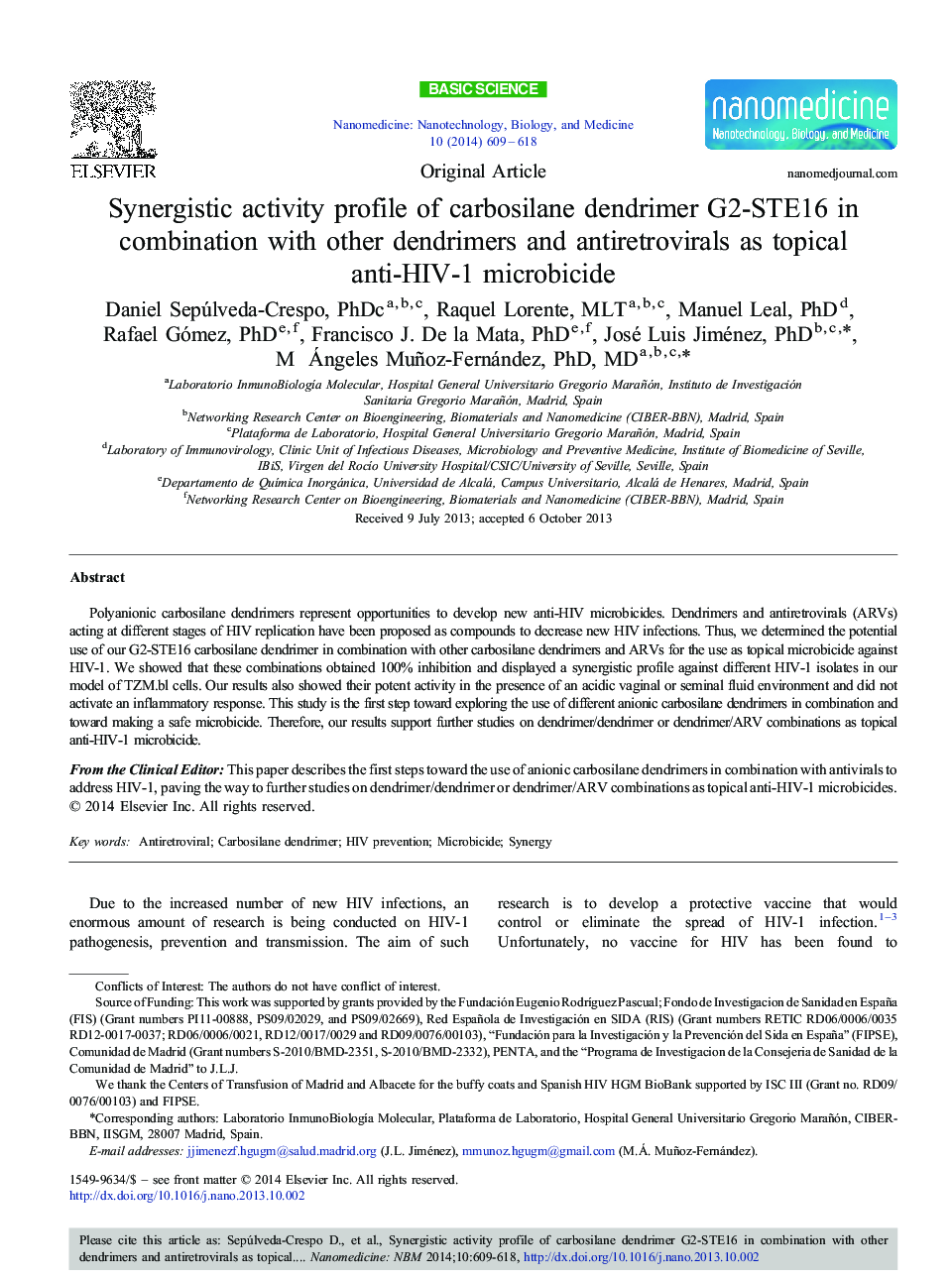| کد مقاله | کد نشریه | سال انتشار | مقاله انگلیسی | نسخه تمام متن |
|---|---|---|---|---|
| 877662 | 911039 | 2014 | 10 صفحه PDF | دانلود رایگان |

Polyanionic carbosilane dendrimers represent opportunities to develop new anti-HIV microbicides. Dendrimers and antiretrovirals (ARVs) acting at different stages of HIV replication have been proposed as compounds to decrease new HIV infections. Thus, we determined the potential use of our G2-STE16 carbosilane dendrimer in combination with other carbosilane dendrimers and ARVs for the use as topical microbicide against HIV-1. We showed that these combinations obtained 100% inhibition and displayed a synergistic profile against different HIV-1 isolates in our model of TZM.bl cells. Our results also showed their potent activity in the presence of an acidic vaginal or seminal fluid environment and did not activate an inflammatory response. This study is the first step toward exploring the use of different anionic carbosilane dendrimers in combination and toward making a safe microbicide. Therefore, our results support further studies on dendrimer/dendrimer or dendrimer/ARV combinations as topical anti-HIV-1 microbicide.From the Clinical EditorThis paper describes the first steps toward the use of anionic carbosilane dendrimers in combination with antivirals to address HIV-1, paving the way to further studies on dendrimer/dendrimer or dendrimer/ARV combinations as topical anti-HIV-1 microbicides.
(A) The life cycle begins when HIV binds to a CD4-receptor and co-receptors (CXCR4 and/or CCR5) on the surface of the CD4 cell. After fusion, HIV releases RNA into the host cell and the reverse transcriptase converts the single-stranded HIV RNA to double-stranded HIV DNA to follow the replication. (B) A combination of two compounds acting at the beginning steps is the key to control HIV replication cycle. Combinations of different dendrimers as entry inhibitors, or a dendrimer with a CCR5 antagonistic (maraviroc) or with a nucleotide HIV reverse transcriptase inhibitor (tenofovir) enhance the antiviral activity compared to the compounds alone.Figure optionsDownload high-quality image (166 K)Download as PowerPoint slide
Journal: Nanomedicine: Nanotechnology, Biology and Medicine - Volume 10, Issue 3, April 2014, Pages 609–618